A Beginner's Farmer's Guide: When to Dig Turnips and How to Store Them Properly
Growing turnips is only half the battle. It is important to dig up the harvest on time and create the right conditions for long-term storage. The timing is affected by the weather, variety and climatic features of a particular region. Methods of collection and processing depend on how long you plan to keep the vegetables. Let's consider when it is better to dig and how to store turnips.
When is it time to harvest
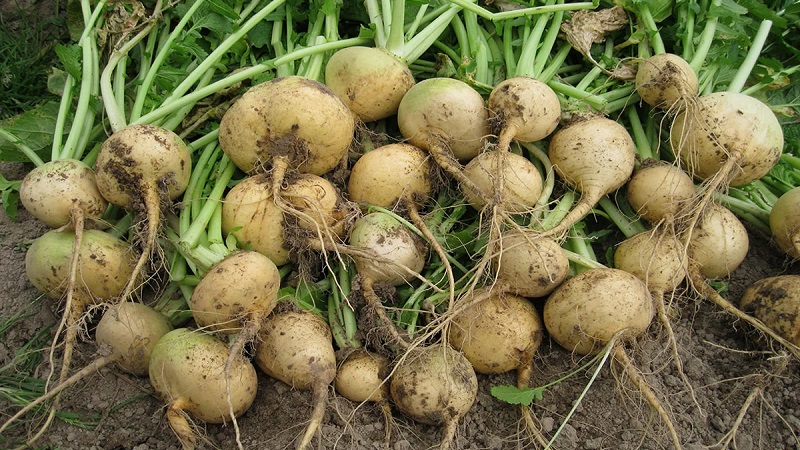
Cleaning times vary. On them affects the time of planting seeds:
- If the gardener does not want to grow a large harvest of turnips for long-term storage, the seeds are usually planted in early spring, a couple of weeks after the snow melts. In most of Russia this is the second half of April. They begin to dig up turnips in July. The harvest is harvested gradually, as it ripens unevenly over 2-3 weeks.
- At growing For winter storage, turnips should ripen no earlier than September. To do this, it is planted at the end of June or beginning of July. Late varieties are harvested a little later. The main thing is not to freeze the vegetables, otherwise they will not store well.
- Experienced gardeners grow 2 turnip crops over a long summer, choosing the right varieties. Early ripening ones are used already in July, freeing up the bed. In their place, another variety is planted for winter storage.
- To determine whether a turnip is ripe, pay attention to its size. It should be approximately 5 cm in diameter, the upper part should be slightly above the level of the bed. Such specimens are sweet and juicy.Larger ones are considered overripe. They become dry and tough. Small turnips are much tastier and contain a large amount of vitamin C, but are not suitable for long-term storage.
If you need to preserve the crop throughout the winter, dig up larger vegetables with a diameter of about 10 cm.
What does the term depend on?
The timing of harvesting turnips depends on its variety and weather conditions. Early ripening vegetables ripen 50 days after germination. They are planted in early spring and used immediately. Mid-season varieties ripen 90 days after the first shoots. Late ripening requires about 120 days.
Reference. The main sign of a ripe turnip is protruding from the soil. Varieties with a round shape emerge from the ground almost completely, while those with a cylindrical shape emerge only halfway.
The timing also depends on the growing region.. Many gardeners rely on the lunar calendar to select favorable days for harvesting.
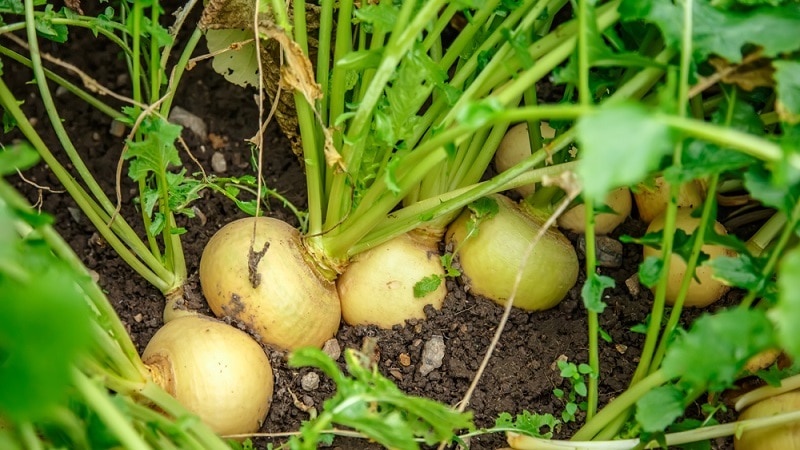
Harvesting time depending on variety
Timely and correct harvest depends largely on turnip varieties. There are:
- early ripening (summer);
- mid-season (autumn);
- late ripening (winter).
Early maturing varieties are usually harvested in early or mid-summer, mid-season - in August or early September. Late-ripening ones are planted only in July and harvested before the first frost.
Note! Early and mid-season vegetables do not store well, so they are placed in the refrigerator.
From weather conditions
The root crop must not be frozen. The harvest is harvested before the first frost arrives..
If heavy rain is expected, it is better to collect turnips from the garden: at the end of the growing season, excess moisture leads to cracking of the vegetables.
Most suitable temperature for cleaning — +10…+12°C.
From region
Approximate Harvest dates depending on the region:
- in the Moscow region and the middle zone - in September;
- in the southern regions - in October, and if autumn is warm, then in early November;
- in the north of the country - in early September;
- in Siberia and the Urals - in the first week of September.
In order not to miss collection deadlines, it is important to carefully monitor the weather forecast. It happens that conditions within one region vary greatly. For example, night frosts will occur in one place, but not in another.
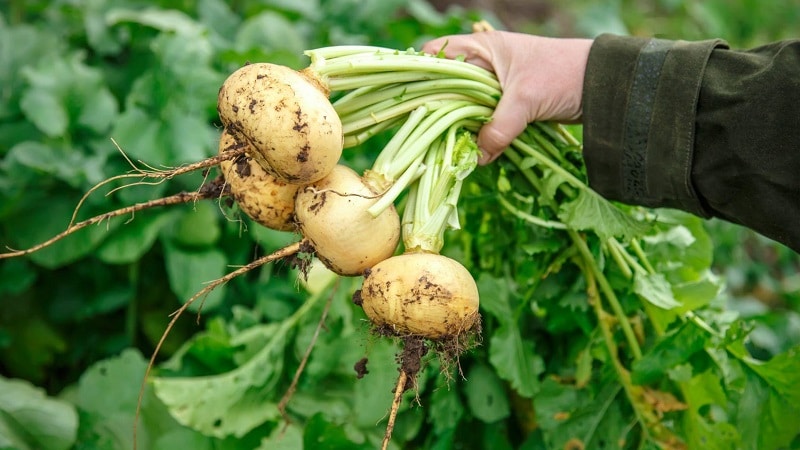
According to the lunar calendar
Many gardeners prefer to additionally use the lunar calendar. It is believed that vegetables collected on days recommended by astrologers will be stored better..
Lunar calendar 2020 recommends harvest on such dates:
- in September - 2, 4, 6, 9–13, 15, 17–22, 24, 29;
- in October - 1, 3, 4, 6–10, 12, 13, 17–22, 31.
Not recommended during the full moon or new moon loosen the soil, prune and harvest.
On a note. First of all, the weather conditions in the region are taken into account. The lunar calendar is used as an auxiliary tool. If frosts or prolonged rains are coming, the crops are harvested earlier.
Basic rules for digging
For long-term storage It is important to properly remove turnips from the ground. For this there are several rules:
- Remove the turnips from the soil as carefully as possible so as not to damage the thin skin. If there are various irregularities or cracks, harmful microorganisms will enter through them. Such vegetables are not suitable for long-term storage; they are used as quickly as possible for food.
- It is allowed to manually pull root crops by the tops. If the soil is too dense and wet, use a shovel. It is stuck about 10 cm from the plant and tilted slightly to loosen the soil.The vegetable is pulled out by hand.
- The collected turnips must be dried, preferably in the open air, so that the sun's rays at least partially disinfect the root crops, and the wind speeds up the drying. The harvest is laid out in the sun for 2 hours.
- Immediately after harvesting, cut off the tops with pruning shears or a sharp knife. The length of the remaining cutting should not exceed 1 cm.
Preparation for long-term storage
To keep turnips for a long time, it is important to prepare them properly.:
- Harvest on time so that the vegetables do not crack.
- Dry the root vegetables.
- Inspect them for rot and damage. Set spoiled vegetables aside or throw away.
- Shake the soil off the root vegetables. They cannot be washed.
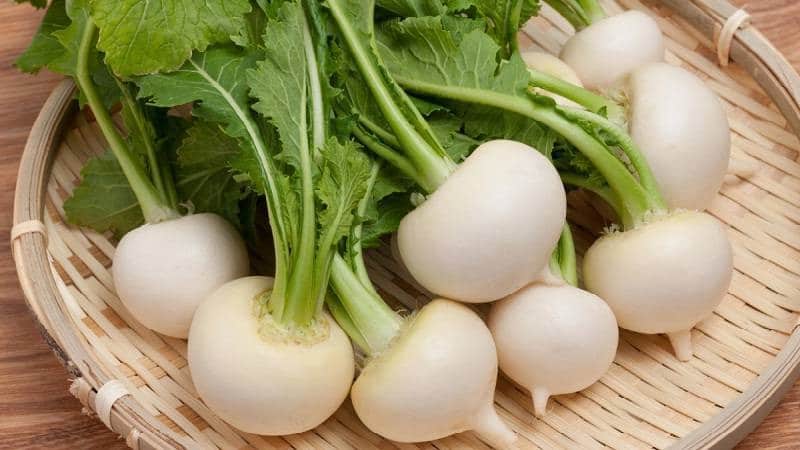
How to store turnips fresh
If you prepare vegetables correctly, they will be stored for a long time and fresh. At the same time they will not lose taste and beneficial qualities.
In an apartment or house
To store vegetables in an apartment, place them in the refrigerator., laid out in bags or plastic containers.
There is another way: Unwashed turnips are wrapped in a bag and placed in the vegetable drawer. If drops of water form inside the bag, replace it with a dry one. In this form, the crop is stored for a month.
You won’t be able to store vegetables at room temperature without using bags for long.. Turnips will be unusable in just a few days. Due to high temperature and low humidity, it will lose its beneficial qualities and become dry.
In the cellar or basement
The cellar is usually the most suitable temperature and humidity for storage.. For bookmarks, place plastic or wooden boxes, which are covered with thick paper. A layer of wet sand or fresh sawdust is poured into them.Root vegetables are placed in one layer so that they do not touch each other. The top is completely covered with sand or sawdust.
Advice! For longer storage, clay is used. This is a labor-intensive process, but it allows you to preserve turnips until spring.
Polyethylene is laid on the bottom of the box. Vegetables are placed on it so that they do not touch, pour a mixture of water and clay. It should have the consistency of sour cream. After drying, lay out the second layer of root vegetables and pour them again. It is not recommended to make more than 2 layers, as the bottom one will begin to deteriorate due to the heaviness of the top ones.
Dipping option available. To do this, prepare garlic and clay mash. The clay is diluted with water to the consistency of thick sour cream so that it does not drain from the vegetables. To prepare garlic, grind 1 tbsp through a meat grinder. cloves of garlic and dilute the resulting mass in 2 liters of water. The mixture is required to disinfect root crops. If you have garlic intolerance, use only a clay mash.
Unwashed vegetables are dipped first in the garlic mixture and then in the clay mixture. After this, the turnips are sent to dry in a dark and ventilated room. Then they are put away in the cellar, on racks.
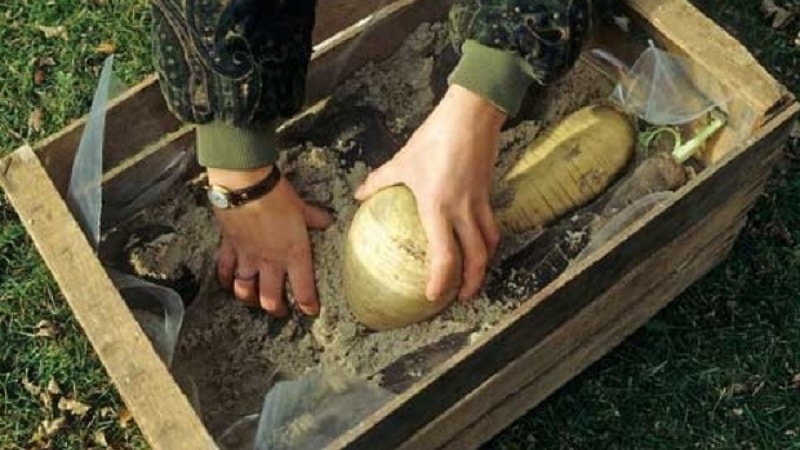
Recycled storage
To further extend their shelf life, turnips are processed: frozen, dried or canned.
Freezing
Strong freezing will preserve turnips until the end of spring:
- Vegetables are thoroughly washed and peeled.
- Cut into small pieces 1-2 cm in size.
- Place in boiling water for 5 minutes.
- The pieces are immediately transferred to ice water for 1 minute.
- Wait until they dry and portion them into bags.
- The packages are sent to the freezer.
Important! Repeated freezing is excluded.
Drying
In addition to freezing, drying is often used:
- Root vegetables are washed, peeled and cut into 0.5 cm pieces.
- Pour boiling water over and allow to dry on cloth or paper towels.
- Cover the tray with parchment paper and lay out the pieces in one layer. Place in the oven or electric dryer for 9-10 hours at +80°C.
- After cooling, the turnips are placed in fabric bags.
Note! The shelf life of the product is 6 months.
Conservation
Turnip suitable for canning. In this case shelf life is 2 years.
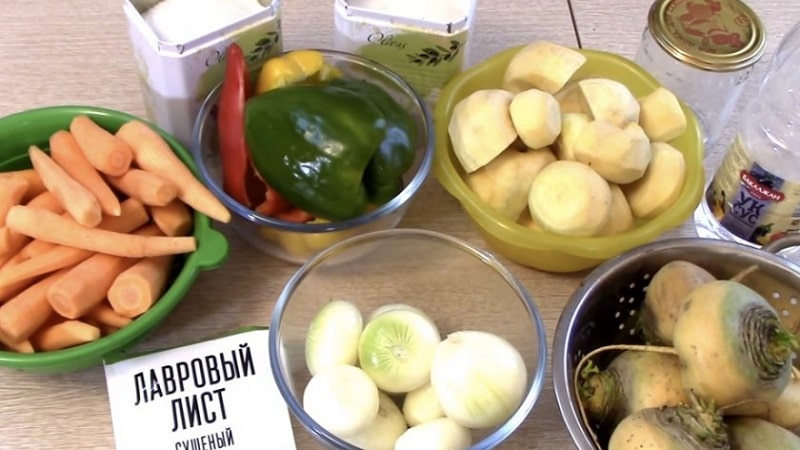
One of the most common preservation options - preparing a salad with carrots. For this you will need:
- turnip - 0.5 kg;
- onion - 1 medium;
- sweet carrots - 2 medium;
- bell pepper - 2-3 pcs.;
- garlic - 2 cloves;
- greens - to taste.
For a 0.5 liter jar you will need to prepare:
- peppercorns - 4 pcs.;
- bay leaf - 4 pcs.;
- vinegar - 1 tbsp. l.;
- salt and sugar - 1 tsp each.
Preparation:
- The petioles are cut off from turnips and carrots, peeled and washed. Cook until half cooked over low heat.
- Remove from the water, cool and cut into medium strips.
- Bell peppers are blanched for 5 minutes and finely chopped.
- Greens, onions and garlic are washed and chopped as finely as possible.
- Place everything in a large container and mix.
- Banks are sterilized. Bay leaves, allspice and vinegar are placed on the bottom. Add vegetables.
- Salt and sugar are dissolved in boiling water. Fill each jar to the top with brine.
- The containers are sent for sterilization: kept in boiling water for 5 minutes.
- The jars are rolled up with pre-sterilized lids, turned over and wrapped in blankets. Leave it in this form until it cools completely.
Conclusion
Turnip is a very healthy and tasty vegetable. With proper preparation, it can be enjoyed throughout most of the year.It is important to choose the timing of harvest and storage options for the crop. The best time for harvesting is before the first frost. If possible, it is better to keep root vegetables in the cellar.